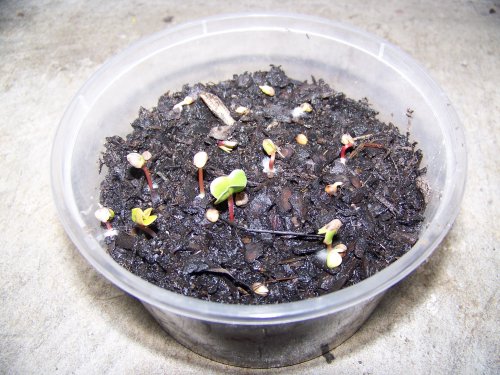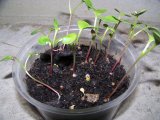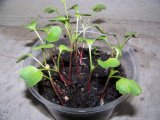The Fungi World Champions Play off!
Not every garden with gum trees has problems with excessive acidity and summer wilting, but mine does.
Now let me start by saying how I was wrong in the past - you can read my previous articles. I begin with a solid contention that something works in a certain way, then end up proving myself wrong!
I did it with Climate science, I made the contention that CO2 absorption bands are close to saturation, but then did the figures and proved myself wrong. I found that 2 degrees of warming was quite plausible. Of course, I never factored in huge releases of methane in the Arctic!
I then proposed that my garden was failing to thrive due to Eucalyptus toxins. I grew chicory in pots affected by gum tanins, eucalyptus oils and found that the effect was quite small and broke down quickly. I found that Gums do produce an acid that affects the adjacent soil, but decided in the end it is not an allelopathic effect (ie helps the tree out compete other plants).
With such a history of changing my mind and being wrong - today I proudly assert that I know why my garden is failing to thrive and that I have a solution.
It is Fusarium wilt - I am absolutely certain, as certain as I was previously that it was Eucalyptus toxins previously.
I have now purchased a little packet of MycoApply® and I am sprinkling it around the garden in areas where I have improved the soil properties. I am sprinkling it over my mulch pile and my wicking pots.
To test my hypothesis I am growing radishes in two pots of 'fusarium wilt' contaminated potting mix (sourced from pots showing wilt symptoms). To one such pot I have added a half teaspoon of 'pixie dust' (MycoApply® containing Trichoderma spores)
I now await the glorious proof that Trichoderma will allow radishes to thrive as opposed to wilt.
To show you what I mean by wilt - here is a picture of a wicking pot of radishes and carrots that suffered wilt in March earlier in the year:
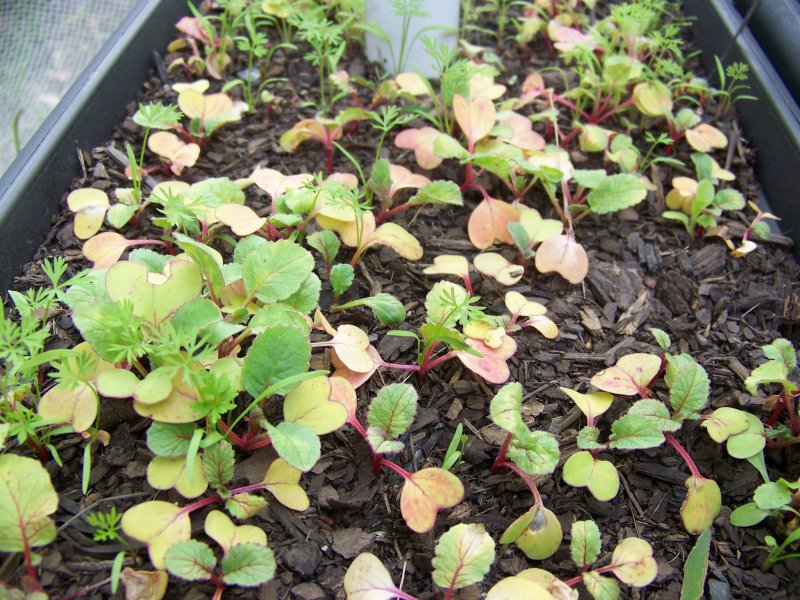
You can see yellowing of the seed leaves, despite growing in a nutrient rich tomato potting mix.
My experiment will try to reproduce this result in the control pot on a much smaller scale, while producing beautiful lush foliage in a pot of exactly the same contaminated soil but with a dose of 'pixie dust'.
I am confident that science will this time prove me third time lucky!
figure 1. Radish sprouting in wilt contanimated pots - left control, right inc MycoApply®
(day 5)
At the 5 day mark, there is little separating the two pots.
figure 2. Radish sprouting in wilt contanimated pots - left control, right inc MycoApply@reg; (day 12)
We can see that Fusarium Wilt is proving to be a bit fickle. Trying to reproduce its effects is not that easy. However, there are some promising signs for the experimenter. In the control pot, a few seeds did try to sprout then shriveled, one of which developed a brown die-off on its root. However, the seedlings that sprouted early in the control seem to be as healthy as those that sprouted in the treated pot.
Cool November weather has kept the Fusarium wilt a little despondent perhaps, but with the weather set to warm, hopefully we will see some experimental divergence soon?
This is contrast to some cherry tomatoes planted in similar circumstances in September:
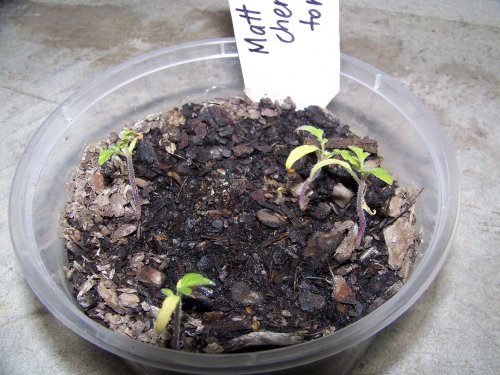
Now you might want to ask the question - did my packet of MycoApply® actually contain some viable spores of Trichoderma?
Now, there is no way for me to prove that I got what the packet says it contains, however, I can at least demonstrate that the packet did contains viable spores of some sort of mould.
In a large pot of sterilised compost (boiled in water for 10 minutes), I added some of the MycoApply® with some milk powder to get it started. With the lid on for 2 weeks, this is what grew:

Now let me start by saying how I was wrong in the past - you can read my previous articles. I begin with a solid contention that something works in a certain way, then end up proving myself wrong!
I did it with Climate science, I made the contention that CO2 absorption bands are close to saturation, but then did the figures and proved myself wrong. I found that 2 degrees of warming was quite plausible. Of course, I never factored in huge releases of methane in the Arctic!
I then proposed that my garden was failing to thrive due to Eucalyptus toxins. I grew chicory in pots affected by gum tanins, eucalyptus oils and found that the effect was quite small and broke down quickly. I found that Gums do produce an acid that affects the adjacent soil, but decided in the end it is not an allelopathic effect (ie helps the tree out compete other plants).
With such a history of changing my mind and being wrong - today I proudly assert that I know why my garden is failing to thrive and that I have a solution.
It is Fusarium wilt - I am absolutely certain, as certain as I was previously that it was Eucalyptus toxins previously.
I have now purchased a little packet of MycoApply® and I am sprinkling it around the garden in areas where I have improved the soil properties. I am sprinkling it over my mulch pile and my wicking pots.
To test my hypothesis I am growing radishes in two pots of 'fusarium wilt' contaminated potting mix (sourced from pots showing wilt symptoms). To one such pot I have added a half teaspoon of 'pixie dust' (MycoApply® containing Trichoderma spores)
I now await the glorious proof that Trichoderma will allow radishes to thrive as opposed to wilt.
To show you what I mean by wilt - here is a picture of a wicking pot of radishes and carrots that suffered wilt in March earlier in the year:

You can see yellowing of the seed leaves, despite growing in a nutrient rich tomato potting mix.
My experiment will try to reproduce this result in the control pot on a much smaller scale, while producing beautiful lush foliage in a pot of exactly the same contaminated soil but with a dose of 'pixie dust'.
I am confident that science will this time prove me third time lucky!
figure 1. Radish sprouting in wilt contanimated pots - left control, right inc MycoApply®
(day 5)
At the 5 day mark, there is little separating the two pots.
figure 2. Radish sprouting in wilt contanimated pots - left control, right inc MycoApply@reg; (day 12)
We can see that Fusarium Wilt is proving to be a bit fickle. Trying to reproduce its effects is not that easy. However, there are some promising signs for the experimenter. In the control pot, a few seeds did try to sprout then shriveled, one of which developed a brown die-off on its root. However, the seedlings that sprouted early in the control seem to be as healthy as those that sprouted in the treated pot.
Cool November weather has kept the Fusarium wilt a little despondent perhaps, but with the weather set to warm, hopefully we will see some experimental divergence soon?
This is contrast to some cherry tomatoes planted in similar circumstances in September:

Now you might want to ask the question - did my packet of MycoApply® actually contain some viable spores of Trichoderma?
Now, there is no way for me to prove that I got what the packet says it contains, however, I can at least demonstrate that the packet did contains viable spores of some sort of mould.
In a large pot of sterilised compost (boiled in water for 10 minutes), I added some of the MycoApply® with some milk powder to get it started. With the lid on for 2 weeks, this is what grew:


